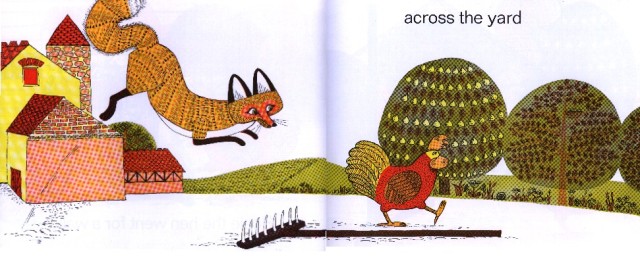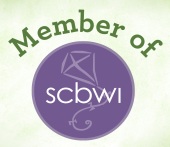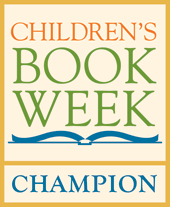April is here, and with it comes the Blogging from A to Z Challenge.
This is my first year participating in the challenge, which will feature blogging on topics daily (except Sundays) corresponding to each letter of the alphabet, starting today with A through April 30 when I end with Z.
For the next 30 days, I’ll be tackling 26 A to Z topics related to children’s literature, beginning with art in kid lit.
So, as David Tennant’s version of The Doctor liked to say … allons-y!
I’m kicking off the 2016 A to Z challenge with a look at art in kid lit.
When it comes to children’s books, authors are only one of the important “A” words. Artists are the other (and equally important) “A” word. Particularly in two categories of kid lit: picture books and illustrated books.
I can feel the brain waves as some of you think, “Aren’t picture books and illustrated books the same? After all, a picture book is an illustrated book.”
If you’re among those thinking that, I used to believe the same thing. But while listening to one of my favorite free iTunes lecture series by David Beagley, a professor of children’s literature at La Trobe University in Australia, I learned picture books and illustrated books are very different categories of children’s books. And artists play a vital role in each.
Let’s take a look at both.
Picture books
In picture books for beginning readers, artists don’t merely draw pictures to correspond with the story. Their artwork shoulders a hefty portion of the storytelling.
In fact, in picture books, sometimes the artwork tells more of the story than the words.
There’s the example of “Rosie’s Walk,” which I mentioned back in a September blog post. The text of “Rosie’s Walk” consists entirely of the following sentence:
Rosie the hen went for a walk across the yard, around the pond, over the haycock, past the mill, through the fence, under the beehives, and got back in time for dinner.
The real storytelling in this book comes from the artwork. A fox stalks Rosie throughout her walk around the farm, but he encounters obstacles every time he attempts to pounce. Meanwhile, Rosie is oblivious to his presence.
 The artwork lets the reader in on the secret, but only the visual reader. To listen to the story without the context of the pictures is a drab experience. There’s no conflict, nothing at stake. Only the person seeing the pictures will be in on the real story. In fact, in the case of “Rosie’s Walk,” the artwork could tell the story with or without the words on the page.
The artwork lets the reader in on the secret, but only the visual reader. To listen to the story without the context of the pictures is a drab experience. There’s no conflict, nothing at stake. Only the person seeing the pictures will be in on the real story. In fact, in the case of “Rosie’s Walk,” the artwork could tell the story with or without the words on the page.
That’s the power of a picture book. The pictures are half (or more) of the storytelling experience. The art has a storytelling structure of its own, separate from (but working in coordination with) the words.
In picture books, the artist also defines much of the story. A few months back, I read a blog post by “Normal Norman” author Tara Lazar, who said she gave artist S. Britt the freedom to decide what her characters would look like.
So Britt made titular character Norman a purple orangutan who wears glasses.

The book cover is memorable to me because of the artist’s concept of Norman. And I bet Norman is memorable to young readers as well because of Britt’s characterization. Typically we think of writers as the ones who use characterization, but in picture books, much of that task falls to artists.
Illustrated books

Hannah Jones’ illustration in “Sarah & Katy and the Imagination Blankets”
An illustrated book’s artwork plays a different role than a picture book’s art. Illustrations serve as emphasis: They emphasize a piece of the story, but they don’t offer new information.
Another way of looking at it: Readers don’t “read” the picture in illustrated books. The same content and context they find in the illustrations is available in the text.
The example nearest and dearest to my heart of illustrated books are the Sarah & Katy books. Hannah Jones illustrated scenes in “Sarah & Katy and the Imagination Blankets” and “Sarah & Katy and the Book of Blank” using information I provided from the text. No new information contained in the art. The characters’ appearances and what’s happening in the scene are clear through both the artwork and the words. Neither has more or less information than the other.

David McKean illustration from Neil Gaiman’s “Coraline”
Although readers don’t necessarily “read” the art in an illustrated book, I can’t sell short the importance of the artwork. It offers visualization of the story. It also helps reinforce the mood of a book.
Earlier this year, I read Neil Gaiman’s “Coraline,” which is illustrated by Dave McKean. His illustrations enhanced the spooky mood of the book. Gaiman’s writing supports what’s happening in McKean’s illustrations and helps me interpret the art. Likewise, McKean’s art intensifies the dark fairy tale nature of Gaiman’s writing.
One more thing …
I’d be remiss if I didn’t mention the importance artists play in peritext.
Peritext consists of images and textual elements surrounding the main body of a published work. This can include front and back covers, back cover text, introductions, footnotes, etc.
When it comes to the peritext of any children’s book — be it a picture book, illustrated book, or completely devoid of interior artwork — the cover art is the first impression. The artist’s work on the cover sets the stage for the book, hinting at its plot, setting, mood, and characters. The peritext of “Coraline” already tells me it has the potential to be spooky because of the dark colors and shadows and Coraline’s expression. The peritext of the “Sarah & Katy and the Imagination Blankets” cover tells readers it’s a lighthearted adventure for two young girls.



Nice article! I’m your newest follower.
LikeLike
Glad to have you, Andrea!
LikeLike
Art is really important in children’s literature. I loved Roald Dahl books as a child and I still have such good memories of those stories, and the way Quentin Blake’s illustrations brought the characters to life
Debbie
LikeLike
Art is tremendously powerful in children’s books! One of the main reasons Winnie the Pooh has remained a favourite throughout my life is due to the illustrations 🙂
Have a wonderful A to Z,
Sylvia van Bruggen
LikeLike
I like your theme! My A to Z challenge is also focused on children’s books. I’m reviewing picture book biographies, and I have a section in each review that talks specifically about the art. I look forward to seeing which topics you will take on for future letters!
LikeLike
That’s a great niche for a theme! This is my first year doing A to Z, so I might have made my theme too broad. I’ll be checking out your blog to read about the picture book biographies!
LikeLike